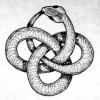When considering SENS and the more conventional disease-centered approach, one of the many objections to SENS is that no radicalism is needed due to the progresses in medicine as shown when comparing life expectancy (LE) say between 1840's and present times.
Indeed, an outstanding 42 years for women are gained (from 45 to 87) over 170 years (ref here and here)
However, a point Dr. David Wood did not fail to miss in his truly excellent book “Abolishing Aging” (see chapter 2, Q2), is that, when taking into account childhood health improvements, the mature LE gain reduces to a less impressive 15 years over the same 170 years (from 64.6 to 79.2 in women, ref here). So passing the 1840’s dangerous childhood years seems to be a reasonable explication to the substantial 42 years rise in LE. Wood then argue that a more radical approach, possibly à-la-SENS or “rejuveneering” (from the contraction of rejuvenation and engineering) would be needed if we want to do more.
I hazard a comparison with what looks to happen in the very last stages of life of supercentenarians but still struggle to find an explication.
It looks like that the exponential increase of mortality rate slows down starting at about 115 (e.g. see Dr. Aubrey de Grey’s presentation here). Technically this is a deviation from the Gompertz-Makham’s “law”. What can be the explication assuming this effect is real as Aubrey convincingly argues?
In other words, I wonder what could be the equivalent of letting passing the dangerous childhood years, likely by the progress of medicine against infections, in the case of supercentenarians. It is just like the very old starts be to “forgotten” by Nature.
Can an explication be found in that, just as that passing the infection driven dangers of childhood years increased substantially the life expectancy in the 1840’s, passing the killing cancers before the very old age picks up slows down mortality. Eventually death will take back its toll much later in age by late cancers disruption or, ironically, by the same increased susceptibility, this time for the very old, to infections. Would this make sense?


























































